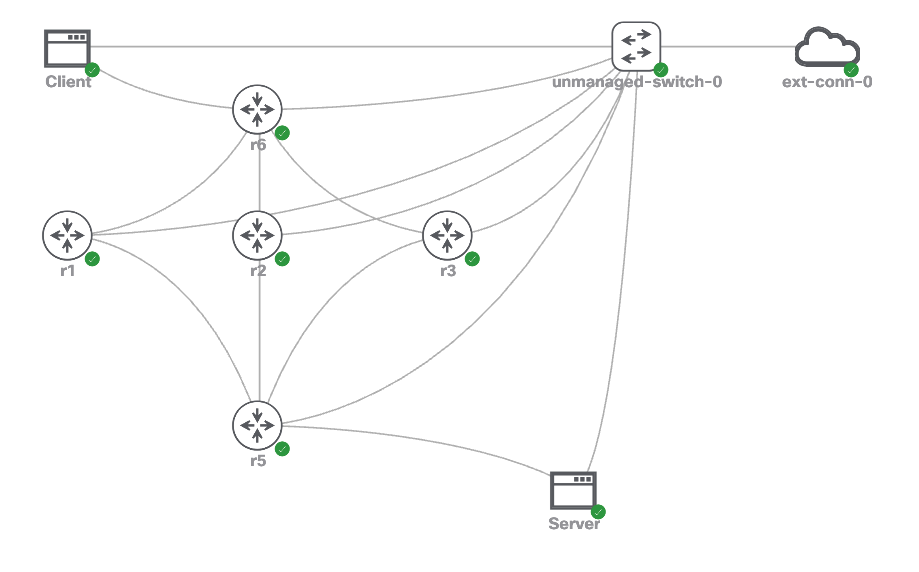Lab topology
For the network lab, we will reuse the network topology we used in Chapter 8, Network Monitoring with Python – Part 2. The network gear will have the management interfaces in the 192.168.2.0/24 management network with the interconnections in the 10.0.0.0/8 network and the subnets in /30s.
Where can we install the ELK Stack in the lab? In production, we should run the ELK stack in a dedicated cluster. In our lab, however, we can quickly spin up a testing instance via Docker containers. If a refresher of Docker is needed, please refer to Chapter 5, Docker Containers for Network Engineers.
Following is a graphical representation of our network lab topology:

| Device | Management IP | Loopback IP |
| r1 | 192.168.2.218 | 192.168.0.1 |
| r2 | 192.168.2.219 | 192.168.0.2 |
| r3 | 192.168.2.220 | 192.168.0.3 |
| r5 | 192.168.2.221 | 192.168.0.4 |
| r6 | 192.168.2.222 | 192.168.0.5 |
The Ubuntu hosts information is as follows:
| Device Name... |



